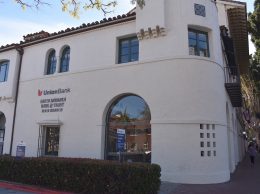Guest op/ed: SBB&T sale marks a turning point for the banking business
IN THIS ARTICLE
- Op/Eds Topic
- Staff Report Author
By Staff Report Friday, March 16th, 2012
By Bill Watkins on March 16, 2012
Early in the morning on Monday, March 12, I received an email indicating that the stock of Santa Barbara Bank & Trust’s parent, Pacific Capital, was trading way above its recent market price. Clearly, something was up.
Only hours later, The Pacific Coast Business Times had an article on its website. Sure enough, Union Bank had acquired Pacific Capital. The purchase marks the end of an era.
For many decades, California’s Gold Coast — Ventura, Santa Barbara and San Luis Obispo counties — were well-served by three independent banks. Bank of A. Levy was a major force in Ventura County’s economy. Santa Barbara Bank & Trust served a similar purpose in Santa Barbara County, while Mid-State Bank was the dominant local bank in San Luis Obispo County.
These banks were great institutions, with great histories. Bank of A. Levy had a 113-year history when it closed in 1995. Santa Barbara Bank & Trust and Mid-State Bank were younger, being founded in the early 1960s. All three of these banks were key players in their respective economies, primarily by providing funding for small-business job growth. They knew their customers and the local economy.
Bank of A. Levy was the first to go. It was sold to First Interstate Bank in 1995. First Interstate was itself acquired by Wells Fargo in 1996. Mid-State Bank sold to Rabobank in 2007. The sale of Santa Barbara Bank & Trust is expected to close this year.
At the time Bank of A. Levy sold, its CEO Marshall Milligan said that “community banking is a cottage industry destined to go the way of blacksmiths and butcher shops.” He was right. In 1990, there were more than12,000 United States banks. As of March 8, there were only 7,334 United States banks.
Ominously, no new banks were created in the United States in 2011.
Local banks serve an economic purpose. They have traditionally been able to profitably make loans, loans that created jobs, that the larger banks could not make. Over the years, that ability has been steadily eroded by regulation. It is a fascinating fact that while small banks do not create national or international financial crises, every major crisis is followed by regulation that makes it harder for small banks to succeed.
The Central Coast still has some fine local banks, but none have the impact of the banks we’ve lost. Worse, new regulations, particularly Dodd-Frank, will make it increasingly difficult for them to serve their economic purpose.
The region also has some fine larger banks. These banks are certainly competing to make business loans, again loans that create jobs.
In particular, Santa Barbara Bank & Trust’s purchaser, Union Bank, is a fine bank. But, the institutional structure of larger banks makes it very difficult for them to profitably serve small business as effectively as the locally owned and managed banks.
Santa Barbara Bank & Trust is not the last local bank we’ll lose, and with every bank lost, our economy loses a bit of its potential.
• Bill Watkins is a former banker and Federal Reserve economist and the current director and chief economist at the Center for Economic Research and Forecasting at California Lutheran University in Thousand Oaks.
Related Articles
 Monday, July 25th, 2022
Monday, July 25th, 2022









